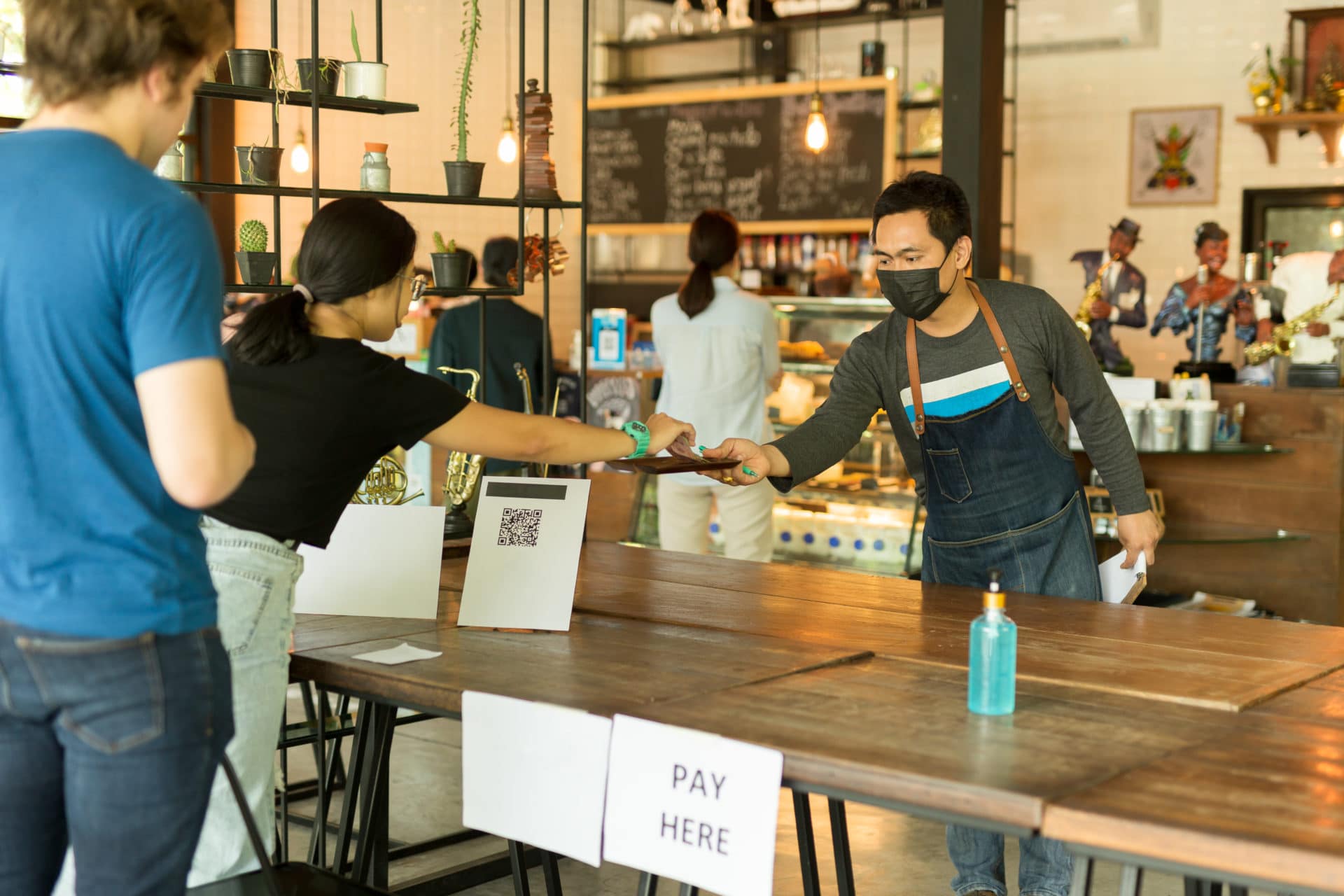With the COVID-19 pandemic curve flattening, many business owners wonder when they can re-open their doors and get back in action. While it’s hard to say when any given restaurant or café is safe to continue operations, the Centers for Disease Control and Prevention (CDC) put out a set of guidelines to help businesses be responsible when they do re-open their doors.
We’ve distilled this information into five critical steps for easy reading, though the CDC’s detailed report is available to view at the bottom of this article.
1. Review Re-Opening Plans and Phasing
Your first step is to get familiar with the COVID-19 reopening plans set forth by the Occupational Safety and Health Administration (OSHA) and other safety practices set forth by the CDC.
The idea here is to get acquainted with the recommended strategies for safe business operation, disinfection, and employee management. Part of this requires that you review the infection curve data in your city as well as your city’s plans for re-opening.
As noted in the CDC’s guidelines, this re-opening will be done in three phases:
- Phase 1 – Restaurant operations limited to drive-through, delivery, and curbside takeout
- Phase 2 – Restaurants may open dining areas with limited capacity and observe social distancing
- Phase 3 – Restaurants may operate normally while maintaining social distancing
More than anything else, local and state ordinances will determine when your café is allowed to re-open, so make sure to keep tabs on these recommendations as you create your re-opening plan.
2. Get Ready to Clean and Disinfect
One of the best ways for cafés to prevent the spread of germs is to double down on their cleaning and disinfecting practices. Set up an aggressive schedule that pays special attention to frequently touched surfaces:
- Door handles
- Countertops
- Screens of your point-of-sale terminal
- Work stations
- Cutting boards
- Condiment holders
(As an aside, make sure to use appropriate cleaning products for each application. Disinfectants may be less effective on certain surfaces, so assess your café’s needs and make sure you’re stocked up.)
Of course, you’ll need to encourage good hygiene by all employees. Make sure all staff members wash their hands regularly and wear some type of protective face covering to prevent the spread of airborne virus particles. Glove use is controversial, so if you require it of your employees, make sure it makes sense. Insist that every employee treats cleanliness as a priority.
3. Maintain Social Distancing
As COVID-19 can be easily transmitted through person-to-person contact, social distancing is (and will likely remain) a chief countermeasure over the coming months.
The severity of your area’s social distancing requirements will depend on your local ordinances and what phase of re-opening you’re in. However, there are a few easy things you can do to encourage customers’ social distancing, regardless of your re-opening phase.
- Limit café services to those dictated by local ordinances
- Install physical barriers between customers and employees at the POS
- Restrict the number of customers allowed in the building
- Consider staggering employee schedules to minimize the number of workers on each shift
- Add signage, posters, or floor markers that encourage people to maintain adequate social distance
Of course, these are just a few examples. There are plenty of other ways to encourage social distancing, including—as the CDC recommends—using mobile technology to minimize interaction customers have with employees. Any tools you can use to keep customers and workers safe are fair game.
4. Set Up a Monitoring Strategy
Keep tabs on disease transmission among your team. Ideally, you’ll set up strong hygienic practices that keep your employees safe. Café owners can’t just assume that things will be fine. You need to have a system for checking the signs and symptoms of your employees throughout the re-opening process.
Set up daily health checks to take each employee’s temperature and assess whether he/she has any Covid-19 symptoms. When in doubt, encourage the employee to stay home.
This is another area where it pays to get familiar with the health resources in your city. If your region is lucky enough to have COVID-19 tests available, encourage symptomatic employees to get an official diagnosis. Of course, you’ll need to handle these checks in a way that respects each team member’s confidentially, but it’s a worthwhile addition to your re-opening strategy. The more info you have, the better.
5. Create a Plan for Sick Employees
Even with your best efforts, you may not be able to prevent your employees from getting sick. And if they do, you need to be ready to respond with an action plan in place.
Any employees who experience COVID-19 symptoms should immediately be sent home. Any workers who had contact with the employee should self-monitor for any emerging issues and self-isolate until they can be reasonably sure that they’re not sick. (It helps to have flexible sick leave policies to discourage workers from coming in.)
If any employee does end up with a COVID-19 diagnosis, the café owner should notify local health authorities and take specific precautions to disinfect the area before continuing service. Typically, businesses with a verified COVID-19 case will need to close for a few days to get things cleaned up, though the exact timetable for this will depend on your region’s disease transmission data and the severity of the case itself.
A Safe and Methodical Approach to Re-Opening Your Café
The above guidelines are a CDC-backed framework for safely re-opening restaurants and cafés, but at the end of the day, recommendations are just that. It’s up to the café owners to asses their situation and apply these rules in their own businesses. It’s certainly possible to do, but it must be done with care.
If you want a full accounting of the CDC’s guidelines, the CDC has the full text here.

